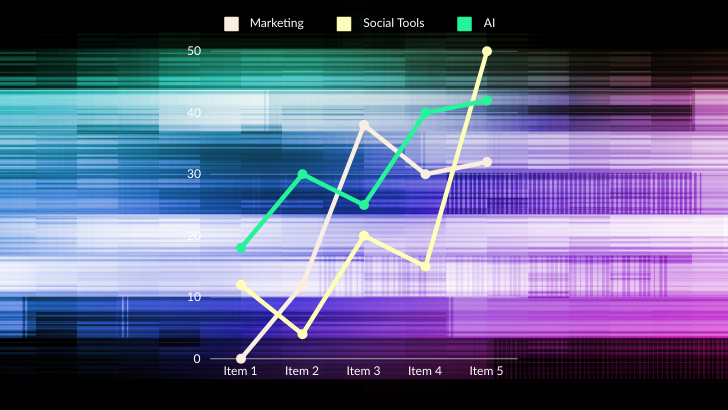In a world of evolving consumer demands, intricate global networks, and rapid technological advancements, supply chain management has emerged as a critical factor for success across industries.
We sat down with Olaf Moschkau (Director of Business Development at Körber Supply Chain Consulting) to talk about selected aspects of supply chain management.
To start things off, we talked about the Business Area he operates in, the “Körber Supply Chain”. This Business Area provides a comprehensive suite of products and services for operational logistics. From software solutions and SAP consulting to warehouse automation and AMR (Autonomous Mobile Robots) technology, designed to streamline every aspect of a company’s supply chain. These solutions extend to general contracting, parcel and postal logistics, and even innovative shuttle technologies. Overall Körber Supply Chain can deliver turnkey solutions, comprehensive warehouse management, transport logistics, and material flow systems, meeting the complex needs of modern supply chains.
The Complexity Spectrum – from Tiny to Titanic
Supply chains, much like the companies they serve, come in diverse sizes and complexities. To optimize them effectively, it’s crucial to understand the differences in approach. Moschkau outlines the three key levels within supply chain management: design, planning, and execution. As companies and their supply chains grow larger, the number of variables and parameters increases, rendering the control and optimization a more and more complex task. Anticipating expected and unexpected situations, cultivating a deep understanding and end-to-end transparency become some of the biggest challenges in complex supply chains says Moschkau. Smaller supply chains, on the other hand, are often not so complex to capture, but have budget problems. Measures to improve profitability are lower and the ROI for digitization investments is more difficult to achieve.
Benchmarks for modern Supply Chains
What indicators can be used to determine the complexity of a supply chain?
Indicators are aspects that directly or indirectly influence supply chains. Examples are human resources (availability and quality), geography, political situations, total cost of ownership, carbon footprint, volatility and many more.
As can be seen, there are many indicators that form a dynamic matrix. The more factors, the bigger the matrix and the complexity. The challenge for companies is to identify the indicators and understand their impact on supply chains to maintain efficient and effective supply chain operations.
Turning Supply Chains into Strategic Advantages
A well-adjusted and systemically modeled supply chain can provide numerous strategic advantages for businesses says Moschkau. For Example: “It helps meeting customer expectations, improving end-to-end efficiency, ensuring reliability, increase predictability, allow scenario planning, and maintaining balanced stock levels.” However, challenges such as partner dependency and unplanned situations can hinder supply chains from reaching their full potential.
Embracing Digital Transformation
According to Moschkau, systemically modeled supply chains are a key part of digitalization and the basis for using a foundation of advanced technologies. These include high-efficiency databases utilizing in-memory technology, cloud platforms for collaboration, connectivity, mobile solutions, advanced analytics, artificial intelligence, and smart algorithms. These technologies enable data-driven decision-making, real-time insights, and streamlined processes. To establish and use those advanced technologies most companies must transition from analog or partly digitalized supply chains to almost completely digital supply chains, which often comes with challenges. One of the biggest challenges is the cost of implementing systems without knowing how big the benefits of digitalization and thus the return on invest of investment will be.
The Human Factor in Modern Supply Chains
Digitalization is crucial, but not all: While automation and technology play pivotal roles in modern supply chains, the human factor remains essential. The role of human employees is shifting from execution to supervision and decision-making. This shift underscores the importance of adaptability, continuous learning, and change management within the workforce. To archive such a continuous development and to ensure that employees stay aligned with the pace of innovation companies need to establish a change management process, a wide range of training programs and, in globalized networks, culture workshops.
Peering into the Future of Supply Chains
The supply chain of the future is poised to leverage advanced technologies. These include all kinds of sensors, the handling of vast amounts of data, smart decision-making through AI (Artificial Intelligence) and AA (Advanced Analytics), cloud solutions, and a high degree of automation through technologies like AGV (automated guided vehicles) or AMRs. Asked for examples of critical success factors for a robust and end-to-end supply chain, Moschkau cites an example from the transportation sector. To achieve a supply chain fit for the future, Moschkau emphasizes two critical factors: “First a seamless information flow across the entire transport process and second an enhanced collaboration through data sharing”. These measures enhance decision-making and responsiveness, leading to more resilient supply chains.
In conclusion,
The digitalization of supply chains, including planning, optimization and sustaining them, is a challenge of the present and will become even more important in the future. Those who succeed in making supply chains transparent, understand the influence and dependency of individual components and introduce targeted improvements will have advantages.



